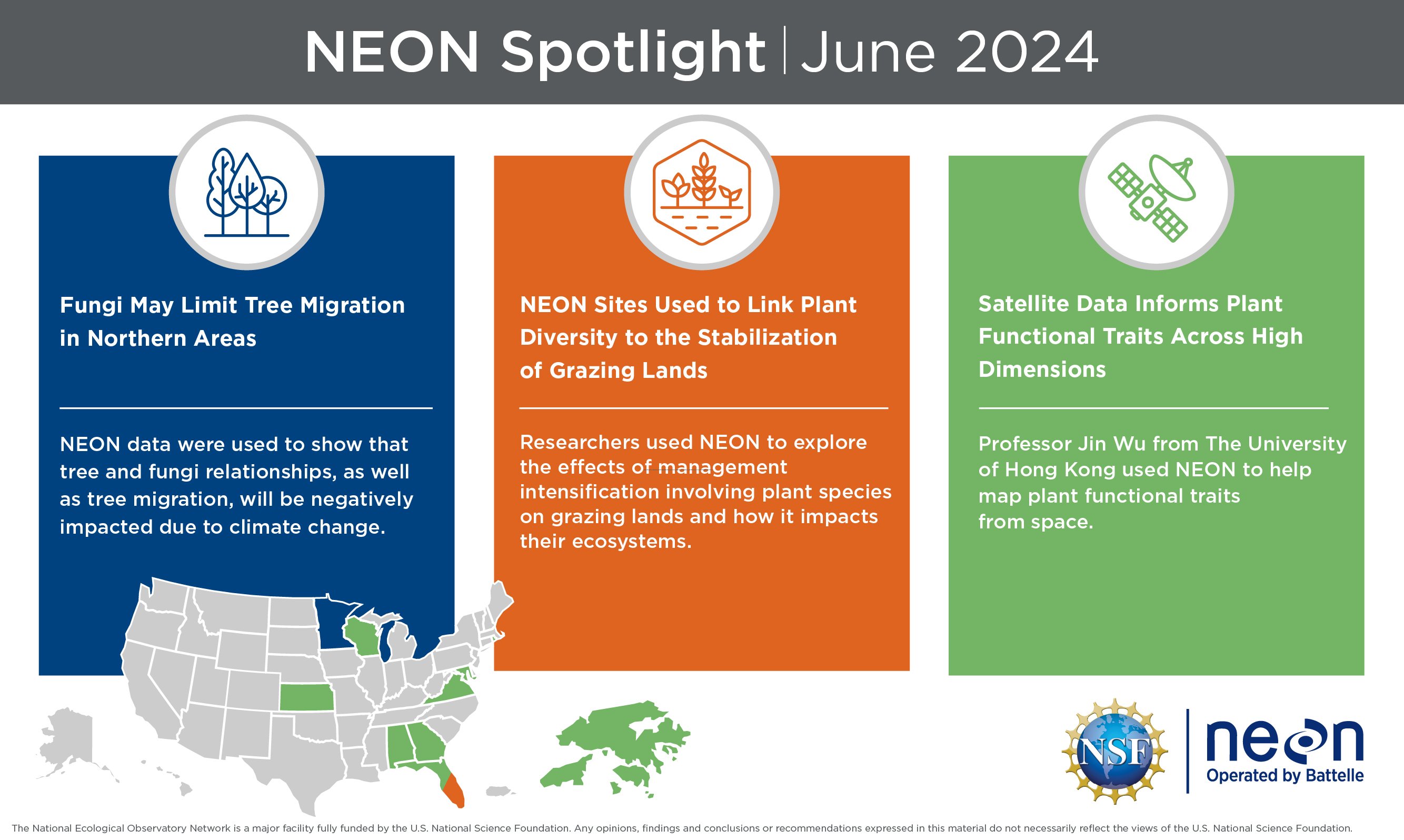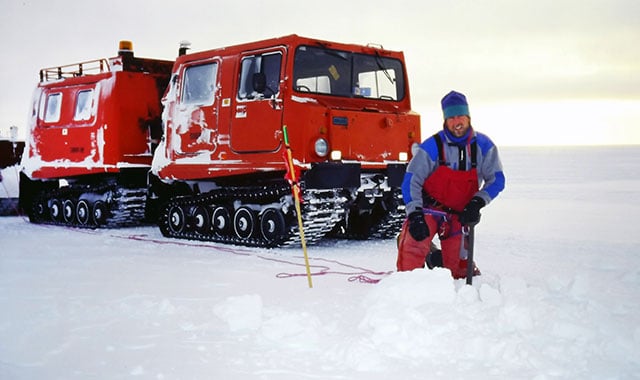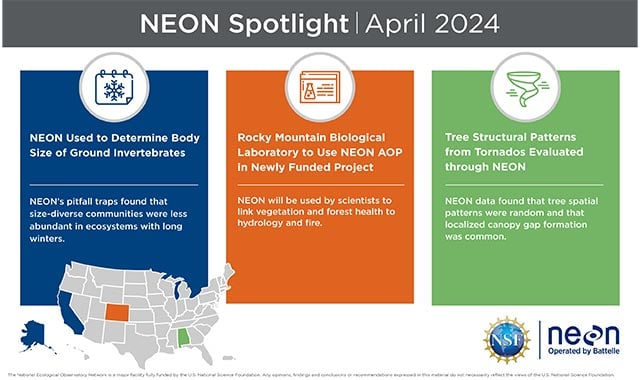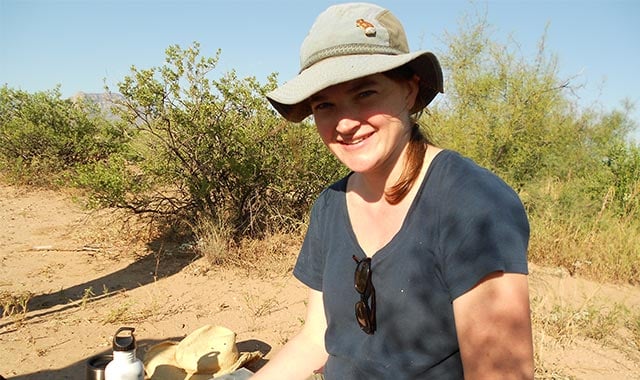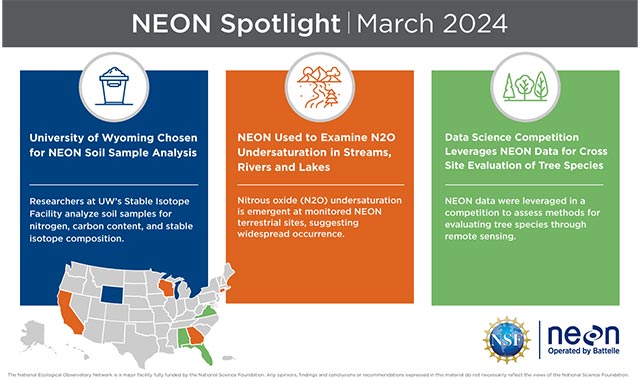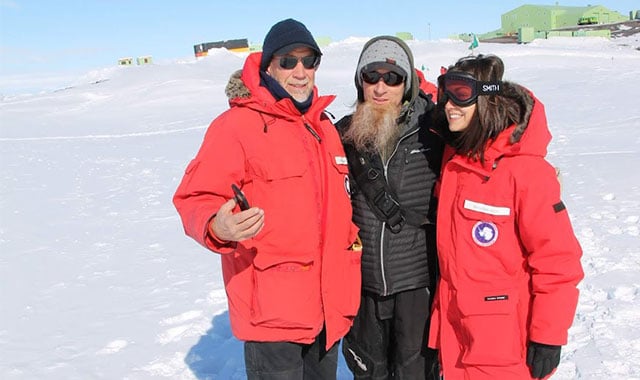May 2023 What’s New with NEON?
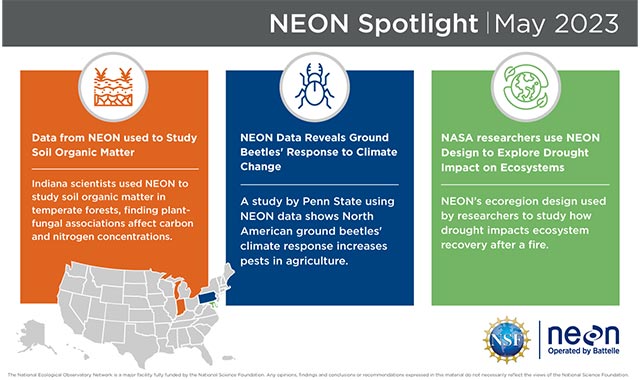
May’s NEON Spotlight highlights three new stories demonstrating how scientists are leveraging NEON data in their efforts to expand the capabilities of ecological science. This month, we are spotlighting how NASA researchers are utilizing NEON to examine drought impact, scientists that are using NEON to study soil, and how NEON data helps reveal ground beetles’ response to climate change. NEON data continues to play a vital role in advancing our understanding of the natural world, fueling public knowledge, and sharpening our ability to tackle environmental challenges.
This Month’s Spotlight
The latest news from NEON includes:
- Data from NEON used to Study Soil Organic Matter
In a study conducted across seven temperate forests in NEON in the eastern United States, researchers used NEON vegetation and litterfall data to investigate how plant-fungal associations, soil factors, and climate influences the distribution and concentrations of carbon and nitrogen in soils. The study found that while minerals in soil primarily control soil organic matter concentrations, the relative abundance of mineral-associated versus particulate organic matter carbon is strongly linked to mycorrhizae (fungi that have a symbiotic relationship with many plant roots).The study finds that while soil mineralogy primarily controls soil organic matter concentrations, the distribution of soil organic matter among density fractions depends on the composition of vegetation and microbial communities, with these effects varying across sites with distinct climates. Additionally, the age of mineral-associated soil carbon is not clearly linked to the factors that control concentrations of mineral-associated organic matter carbon and nitrogen within biomes.
- NEON Data Reveals Ground Beetles' Response to Climate Change
Penn State researchers have found that the response of ground beetles to climate change in North America will largely depend on their species' traits and habitats, with some species thriving while others decline. The team studied 136 ground beetle species found in diverse habitats across North America, Puerto Rico, and Hawaii using data collected from NEON. They found that less mobile, nonflying beetle species could decline over time in a warmer, drier climate; however, habitat conservation can mitigate the effects of climate change and reverse the trend in some areas. Ground beetles are natural predators of many agricultural pests, including slugs, snails, cutworms, and root maggots, and help reduce the need for synthetic pesticides. Any decline in their populations could lead to an increase in pest populations and subsequent crop damage. This research suggests that conservation efforts focused on preserving habitats for these beetles may help mitigate the effects of climate change on pest control in agriculture.
- NASA researchers use NEON Design to Explore Drought Impact on Ecosystems
NEON's ecoregion design was used by NASA researchers to study the impact of drought on ecosystem recovery after a fire in the western United States. The study used remote sensing to show that ecoregions dominated by grasslands and savannas are more susceptible to drought stresses, which amplify fire-induced evapotranspiration decline and shift water flux. In contrast, severely burned forests have slower or incomplete recovery but are less sensitive to dry extremes due to moisture accessed by deeper roots. The study concludes that drought plays a dominant role in altering the resilience of vegetation to fires, with critical implications for terrestrial ecosystem stability in the face of human induced climate change.
Sponsored by the National Science Foundation (NSF) and operated by Battelle, NEON is a continental-scale ecological observatory network dedicated to providing high-quality, consistently generated, standardized data that is free and available to all users. By enabling scientists, researchers, and students to address critical questions and understand ecosystem changes over time, the NEON program allows the ecological community to tackle questions and problems at a scale that was not possible before.
You can read about the latest work and research in the NEON Spotlight every month at Inside Battelle, and on our social media channels. For more information about NEON, visit NEONscience.org.
Related Blogs
BATTELLE UPDATES
Receive updates from Battelle for an all-access pass to the incredible work of Battelle researchers.
